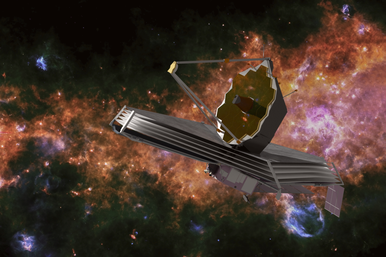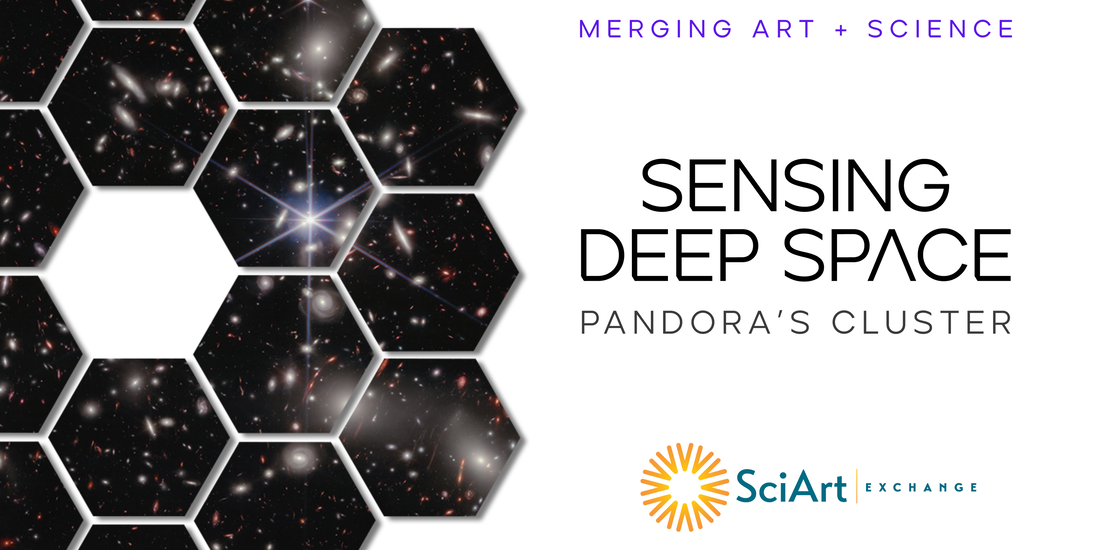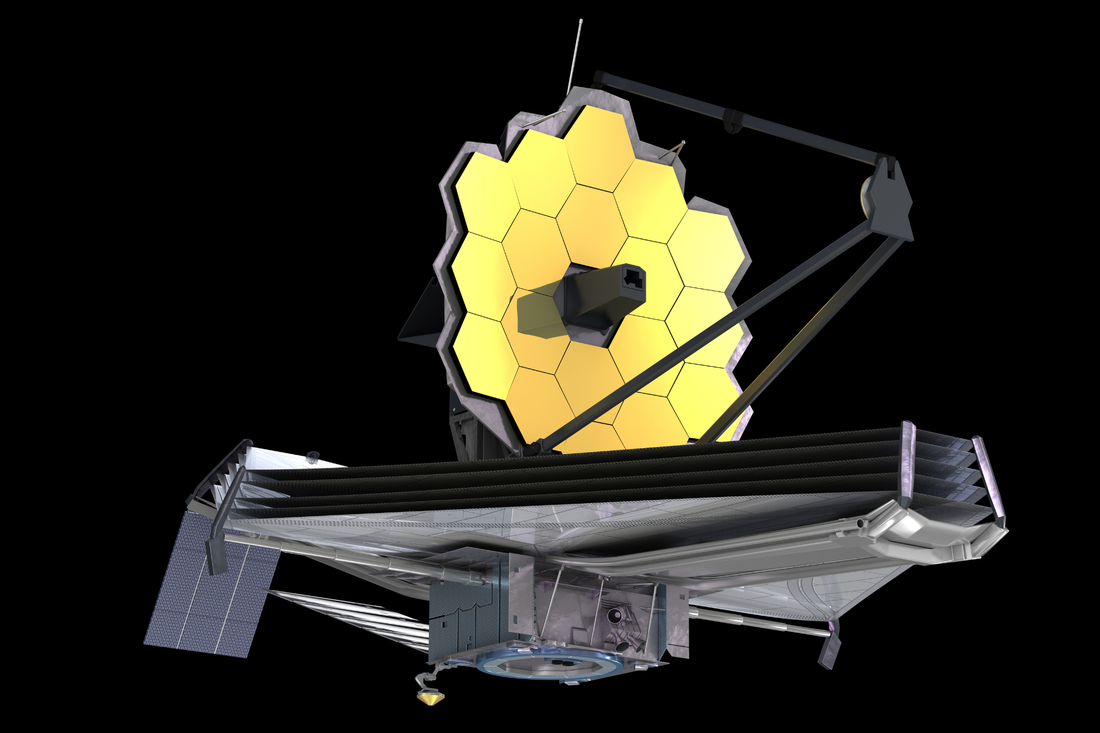|
Welcome back, cosmic enthusiasts! We're thrilled to dive into the celestial realms once again with Episode 4 of our Sensing Deep Space Vlog series. We have the honor of hosting the brilliant Dr. Jancy McPhee from SciArt Exchange, who extends a warm welcome to the talented audiovisual artist, Ben Heim.
Ben Heim, renowned for his audiovisual mastery, shares insights into his creative process. Discover how he infuses his art with the wonders of the cosmos, transforming scientific concepts into visually and sonically stunning experiences. As art and science converge, Episode 4 becomes a testament to the boundless possibilities when creativity meets knowledge. Expect to be inspired as we witness the birth of a cosmic masterpiece that challenges perceptions and fuels the imagination.
1 Comment
"Fusion of art and science"
In this episode, we have the privilege of sitting down with two brilliant minds, Dr. Jancy McPhee, the visionary Executive Director of SciArt Exchange, and Dr. Roger Marina from the prestigious University of Texas at Dallas. Join us as these luminaries share their insights into the mesmerizing installation and the exquisite fusion of art and science that lies at its core. Get ready to embark on a thought-provoking journey that explores the very essence of creativity and innovation in the cosmos.
 Pandora's Cluster, scientifically known as Abell 2744, is a celestial masterpiece that captivates the imagination with its ethereal beauty. Located approximately 4 billion light-years away from Earth, this remarkable galaxy cluster presents a visual spectacle, offering astronomers and space enthusiasts a glimpse into the stunning intricacies of our universe. In this article, we will explore the breathtaking beauty of Pandora's Cluster and unravel the secrets hidden within its cosmic tapestry. A Tapestry of Galaxies: Pandora's Cluster is a dynamic congregation of hundreds of galaxies, entwined in a cosmic dance of gravity and cosmic forces. This galactic tapestry is composed of various shapes, sizes, and colors, ranging from spiraling galaxies adorned with vibrant arms to elliptical galaxies with smooth, elongated structures. Each galaxy within the cluster has a story to tell, contributing to the overall visual allure of Pandora's Cluster. Cosmic Color Palette: One of the striking aspects of Pandora's Cluster is its rich and diverse color palette. The cluster's galaxies exhibit a mesmerizing array of hues, ranging from deep blues and vivid reds to golden yellows and serene greens. These colors are not mere artistic embellishments but instead provide valuable scientific insights into the cluster's composition, stellar populations, and evolutionary processes. By analyzing the colors of galaxies within Pandora's Cluster, astronomers can uncover clues about the ages, chemical compositions, and star formation histories of these cosmic entities. Gravitational Lensing: A Cosmic Mirage: Pandora's Cluster possesses an immense mass, which bends and distorts the fabric of space-time itself. This gravitational distortion gives rise to a phenomenon known as gravitational lensing. Just as a lens magnifies and distorts light, the gravitational lensing effect in Pandora's Cluster acts as a cosmic mirage, warping and magnifying the light emitted by background galaxies. The result is a breathtaking display of gravitational arcs and multiple images of distant galaxies, adding an enchanting allure to the cluster's visual appeal. Cosmic Collisions and Arcs of Light: Pandora's Cluster is the result of a colossal collision between at least four smaller galaxy clusters, an event that sparked a celestial symphony of cosmic interactions. These collisions generated shockwaves that rippled through the cluster, leading to the formation of dramatic arcs of light. These luminous arcs, resembling cosmic rainbows, are the product of gravitational lensing in action. The arcs trace the paths of light from galaxies located far beyond Pandora's Cluster, delicately curved and magnified by the cluster's gravitational pull. The result is a celestial spectacle, a visual testament to the dynamic and ever-evolving nature of our universe. The Dance of Dark Matter: Beyond its stunning visual features, Pandora's Cluster also provides a unique opportunity to study the enigmatic dark matter. Dark matter, an invisible substance that constitutes the majority of the universe's mass, plays a significant role in shaping the cosmic landscape. The gravitational effects of dark matter are evident within Pandora's Cluster, where its distribution can be inferred by observing the gravitational lensing phenomena and the motion of galaxies within the cluster. Through meticulous analysis and modeling, scientists gain valuable insights into the nature and properties of dark matter, enhancing our understanding of the fundamental forces that govern the cosmos. Pandora's Cluster is a true celestial masterpiece, an embodiment of cosmic beauty and scientific intrigue. Its captivating visual allure, vibrant colors, and gravitational lensing phenomena showcase the profound complexity and grandeur of our universe. "The Research"
Join us for an informative episode featuring SciArt Exchange’s Dr. Jancy McPhee and Dr. Carol Christian from the Space Telescope Science Institute. Together, they're your cosmic tour guides, ready to unveil the mind-bending technology propelling the James Webb Space Telescope and the awe-inspiring marvels of Pandora’s Cluster. Get ready to have your mind expanded and your sense of wonder redefined!” #SensingDeepSpace
"The Journey Begins"
Introducing "Sensing Deep Space: Pandora's Cluster" Vlog Episode 1!
In this exciting debut episode, join us as we delve into the captivating journey of assembling a multi-disciplinary team and the hurdles we've encountered along the way. Led by Dr. Jancy McPhee and Ari Peralta, this episode jumpstarts a behind-the-scenes experience, documenting our relentless pursuit of bringing the wonders of Pandora's Cluster to life. Embark on this extraordinary adventure as we navigate the complexities of merging art, science, and technology to create a truly awe-inspiring installation. Episode 1 sets the stage for an enthralling narrative that will captivate your imagination and spark your curiosity. This vlog series will uncover the challenges, breakthroughs, and triumphs leading up to the grand unveiling on January 6th at the prestigious Eisemann Center in Richardson, TX. Richardson, TX – In a triumph of visionary collaboration, the nonprofit SciArt Exchange, unveils an installation that transcends the realms of human capability. 'Sensing Deep Space: Pandora's Cluster,' is an installation that was first cast as a dream in the minds of SciArt Exchange's luminary figures: Dr. Jancy McPhee, the Executive Director, and Ari Peralta, Chairman of the Board. United with the nonprofit's associates and partners from the esteemed University of Texas at Dallas, the journey also takes on the creative direction of the audiovisual artist and composer, Ben Heim. Thanks to the generous support from The Eisemann Edge Initiative at Communities Foundation of Texas, the installation will open its doors on January 6th, 2024, at the Eisemann Center for Performing Arts located in Richardson, TX. “I am passionate about supporting innovative ways to promote tech-based arts in the region. SciArt Exchange’s new exhibit will provide an opportunity for North Texans to engage in the arts, science, and technology education while learning about space in a unique and profound way,” says Charles Eisemann. Dr. Jancy McPhee, a visionary in the field of science and art collaboration, has assembled a team of talented artists, scientists, and technicians to bring this installation to life. According to McPhee, through the meticulous curation of the minds at SciArt Exchange and collaborators, 'Sensing Deep Space: Pandora's Cluster' becomes not just an exhibit, but an “embodiment of the celestial symphony.” A symphony orchestrated by none other than Ben Heim. Through his direction the exhibit merges auditory and visual realms seamlessly. Within the installation, you won't just witness Pandora's Cluster; you will become one with its “mesmerizing wonders.” The accolades of Ben Heim paint a portrait of a visionary artist with contributions across multiple artistic landscapes. Drawing inspiration from the extraordinary Pandora's Cluster, a galactic collision of several galaxy clusters located approximately 4 billion light-years away, the installation will incorporate cutting-edge technologies to create a multisensory experience. Astronomers have been studying this region for decades, using Hubble, Spitzer, Chandra telescopes and most recently James Webb Space Telescope. The James Webb Space Telescope and its unprecedented observational capabilities, revolutionizes our deep space exploration. It offers humanity a portal into the inaccessible deep space,, allowing the creation of a spellbinding installation that shatters the boundaries of earthly experience, enabling visitors to traverse the untraversable. Pandora's Cluster, a realm too distant and unfathomable for human feet to tread, is now attainable through the exquisite marriage of artistry and science. "We are incredibly excited to present Sensing Deep Space: Pandora's Cluster' to the public," says Dr. Jancy McPhee.. "This installation aims to merge the realms of science and art, enabling visitors to appreciate the beauty of the universe and the complexity of its underlying physics. It's an opportunity to embody the unknown and ignite a sense of curiosity and understanding within each individual." "Sensing Deep Space: Pandora's Cluster" will be open to the public from January 6th, 2024 through mid-February. It will provide an opportunity for individuals of all ages to be inspired, educated by the vastness and splendor of deep space and the science and technology that enables us to sense it. For more information about the multisensory installation "Sensing Deep Space: Pandora’s Cluster”, please visit https://www.sciartex.net/sensingdeepspace.html. RSVP at the Eisemann Center Online Box Office ***  James Webb Telescope in Space. Elements of this image furnished by NASA (Credit: NASA) James Webb Telescope in Space. Elements of this image furnished by NASA (Credit: NASA) Since the dawn of human civilization, we have gazed at the night sky, seeking answers to the fundamental questions about our universe. The James Webb Space Telescope (JWST), has become one of humanity's most advanced observatories, holding the potential to unravel some of the deepest cosmic mysteries. The JWST, represents a monumental leap forward in our quest to understand the cosmos. This next-generation space telescope, combines cutting-edge technology and scientific ingenuity to push the frontiers of astronomical exploration. Unprecedented Observational Capabilities: Enhanced Sensitivity: The JWST boasts a massive 6.5-meter segmented primary mirror, nearly three times larger than the Hubble Space Telescope's mirror. This larger size, combined with its infrared focus, allows the JWST to collect and analyze faint celestial signals with extraordinary sensitivity. It can peer deeper into space, observing objects that existed shortly after the Big Bang. Infrared Vision: The JWST's primary objective is to study the universe in the infrared portion of the electromagnetic spectrum. Infrared light can penetrate interstellar dust clouds that obscure visible light, enabling the telescope to observe regions of star formation, distant galaxies, and even detect the chemical composition of exoplanet atmospheres. This capability opens new avenues for studying the origins of stars, galaxies, and potentially finding signs of life beyond our solar system. Unveiling the Early Universe: Observing the First Galaxies: The JWST's unprecedented sensitivity and infrared capabilities allow it to peer into the early universe, capturing the light emitted by the first galaxies that formed after the Big Bang. By studying these ancient light sources, astronomers can gain insights into the processes that led to the birth of galaxies, the formation of stars, and the evolution of cosmic structures. Probing Exoplanet Atmospheres: One of the most exciting prospects of the JWST is its ability to analyze exoplanet atmospheres. By observing the starlight that passes through the atmospheres of distant planets, the telescope can detect the presence of key molecules, such as water vapor, carbon dioxide, and methane. Such discoveries provide crucial clues about the habitability and potential for life on exoplanets. Unraveling the Dark Universe: The JWST will play a pivotal role in studying dark matter and dark energy, the two mysterious components that make up a significant portion of our universe. By observing the gravitational lensing effects caused by massive galaxy clusters, such as Pandora's Cluster, the telescope will help unravel the distribution of dark matter and shed light on the cosmic processes driving the accelerated expansion of the universe. The shared data and discoveries made by the JWST will foster global collaboration and advance our collective understanding of the cosmos. The James Webb Space Telescope revolutionizes our understanding of the universe. With its unrivaled sensitivity, infrared vision, and advanced technology, it is unveiling the universe's secrets, from the earliest moments after the Big Bang to the search for life beyond our own planet. |
authorBryant Maxwell - Project Communications Officer Archives
November 2023
Categories |
- Home
- Design Your Habitat
-
Contests
- NASA Children's Art Contest
- Science in Action NASA Earth Comic Strip Contest >
- Moon Youth Art Competition Gallery
- Project Mars
- New Horizons Ultima Art
- STEAM Your Science >
- 2017 Eclipse Over Houston >
- Humans In Space Art- Video Challenge >
- Humans In Space Art - Youth Competition >
- Humans In Space Art- CAFE >
- Events
- Services
- Community
- Donate
- Subscribe
- Contact
- Home
- Design Your Habitat
-
Contests
- NASA Children's Art Contest
- Science in Action NASA Earth Comic Strip Contest >
- Moon Youth Art Competition Gallery
- Project Mars
- New Horizons Ultima Art
- STEAM Your Science >
- 2017 Eclipse Over Houston >
- Humans In Space Art- Video Challenge >
- Humans In Space Art - Youth Competition >
- Humans In Space Art- CAFE >
- Events
- Services
- Community
- Donate
- Subscribe
- Contact



 RSS Feed
RSS Feed